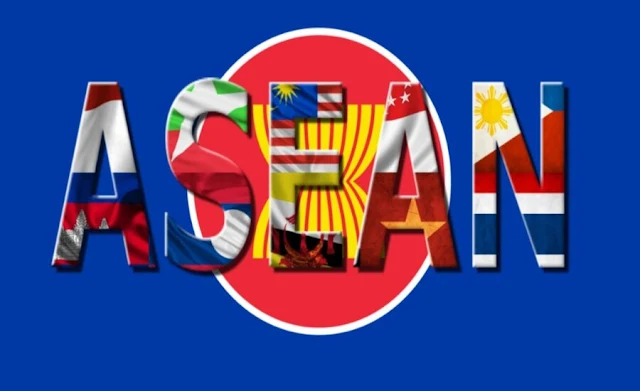The Association of Southeast Asian Nations (ASEAN) has long been a cornerstone of regional cooperation, fostering economic growth, political stability, and cultural exchange among its ten member states. As ASEAN steps into 2025, its role as a global player is more significant than ever. This article delves into the organisation’s achievements, challenges, and future trajectory, highlighting the vital role ASEAN continues to play in shaping the region’s future.
The Foundation of ASEAN’s Success
ASEAN, established in 1967, comprises Brunei, Cambodia, Indonesia, Laos, Malaysia, Myanmar, the Philippines, Singapore, Thailand, and Vietnam. These nations have embraced a shared vision of regional integration and mutual progress. ASEAN’s foundational principles of consensus, non-interference, and peaceful resolution of disputes have created a strong sense of unity, enabling it to navigate geopolitical complexities.
By 2025, ASEAN has emerged as a model for regional collaboration, showcasing how diverse nations can work together to achieve common goals. The ASEAN Economic Community (AEC) is a testament to this success, driving trade liberalisation, reducing tariffs, and facilitating a seamless flow of goods, services, and investments across borders.
ASEAN’s Economic Landscape
The ASEAN region boasts a combined GDP of over $3 trillion, making it the fifth-largest economy globally. In 2025, ASEAN’s economic dynamism continues to attract global investors. The bloc’s strategic location and young, tech-savvy population make it a hub for innovation and entrepreneurship.
ASEAN’s commitment to sustainability and digital transformation has been pivotal. Initiatives like the ASEAN Smart Cities Network (ASCN) and the ASEAN Digital Masterplan 2025 underscore the bloc’s focus on leveraging technology to enhance urban living and drive economic growth. With initiatives to support green energy and circular economies, ASEAN is setting an example for sustainable development worldwide.
Strengthening Regional Connectivity
Connectivity remains at the heart of ASEAN’s vision for 2025. The Master Plan on ASEAN Connectivity (MPAC) 2025 has prioritised infrastructure development, digital integration, and people-to-people linkages. Improved transport networks, such as high-speed railways and modernised ports, are reducing travel times and enhancing trade efficiency.
Digital connectivity is equally transformative. ASEAN’s efforts to bridge the digital divide and promote access to affordable internet are empowering small and medium-sized enterprises (SMEs) and fostering regional innovation. These advancements solidify ASEAN’s position as a critical player in the global digital economy.
Addressing Challenges
While ASEAN has made remarkable strides, it faces several challenges. Geopolitical tensions, environmental issues, and socio-economic disparities among member states pose significant hurdles. The South China Sea dispute continues to test ASEAN’s unity, requiring diplomatic finesse and adherence to international laws.
Climate change is another pressing concern. ASEAN nations are among the most vulnerable to rising sea levels and extreme weather events. Collaborative efforts, such as the ASEAN Agreement on Transboundary Haze Pollution and regional disaster response mechanisms, are essential to address these environmental challenges.
ASEAN’s Role on the Global Stage
In 2025, ASEAN’s influence extends far beyond Southeast Asia. The bloc’s active participation in forums such as the ASEAN Plus Three, East Asia Summit, and the Regional Comprehensive Economic Partnership (RCEP) underscores its commitment to multilateralism. By fostering partnerships with major economies, ASEAN plays a crucial role in shaping global trade and security.
ASEAN’s neutrality and inclusive approach make it a valuable partner in mediating global issues. Its ability to bring diverse stakeholders to the table highlights its potential as a bridge between East and West.
Cultural Exchange and People-Centred Growth
One of ASEAN’s defining features is its rich cultural diversity. The bloc’s commitment to preserving heritage while promoting tourism has bolstered regional identity. Programmes like the ASEAN Cultural Heritage Digital Archive and ASEAN University Network enhance cross-cultural understanding and educational collaboration.
People-centred initiatives remain a priority. Efforts to improve healthcare access, enhance education, and empower women and youth ensure that ASEAN’s growth benefits all segments of society. The ASEAN Youth Development Index reflects the bloc’s focus on harnessing the potential of its younger generation.
The Road Ahead for ASEAN
As ASEAN navigates the complexities of 2025, its resilience and adaptability are evident. The bloc’s ability to address emerging challenges while staying true to its founding principles is a testament to its enduring strength. Moving forward, ASEAN must continue to prioritise inclusivity, sustainability, and innovation to remain relevant in an ever-changing world.
To achieve its vision, ASEAN needs to deepen regional integration, strengthen partnerships, and uphold the rule of law. By fostering trust and collaboration, the organisation can ensure lasting peace, prosperity, and progress for its member states and beyond.
Conclusion
ASEAN in 2025 is a beacon of unity and growth, demonstrating the power of collaboration in addressing shared challenges and seizing opportunities. As the region continues to evolve, ASEAN’s role as a driver of economic, social, and cultural progress will remain indispensable. By building on its achievements and embracing a forward-looking approach, ASEAN is well-positioned to shape a brighter future for Southeast Asia and the world.





0 Comments